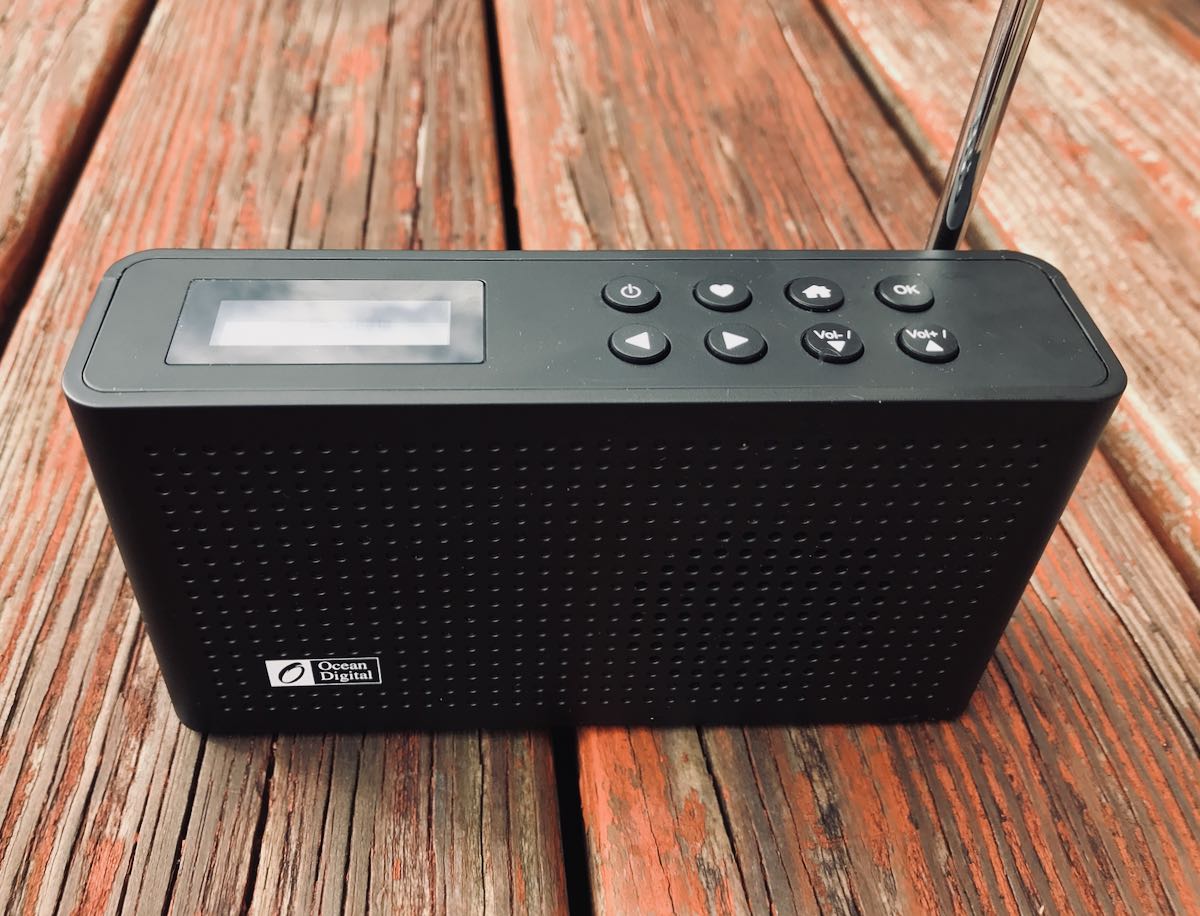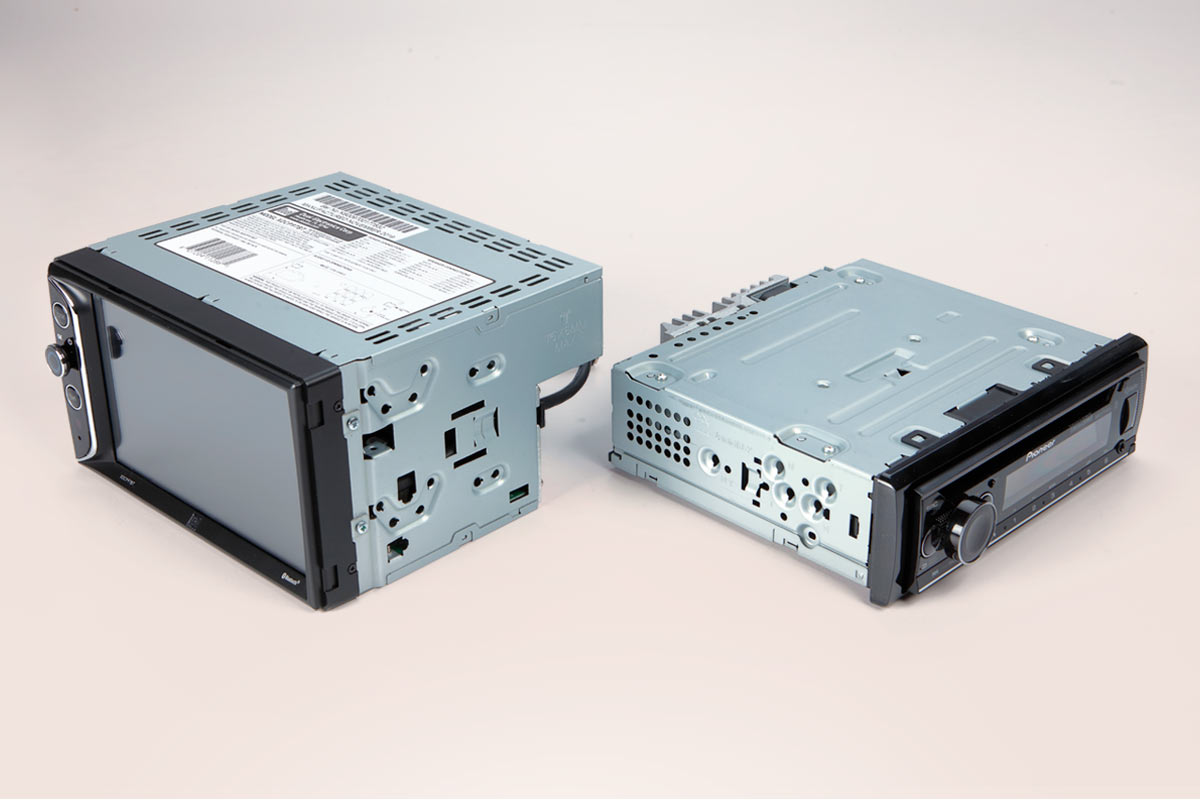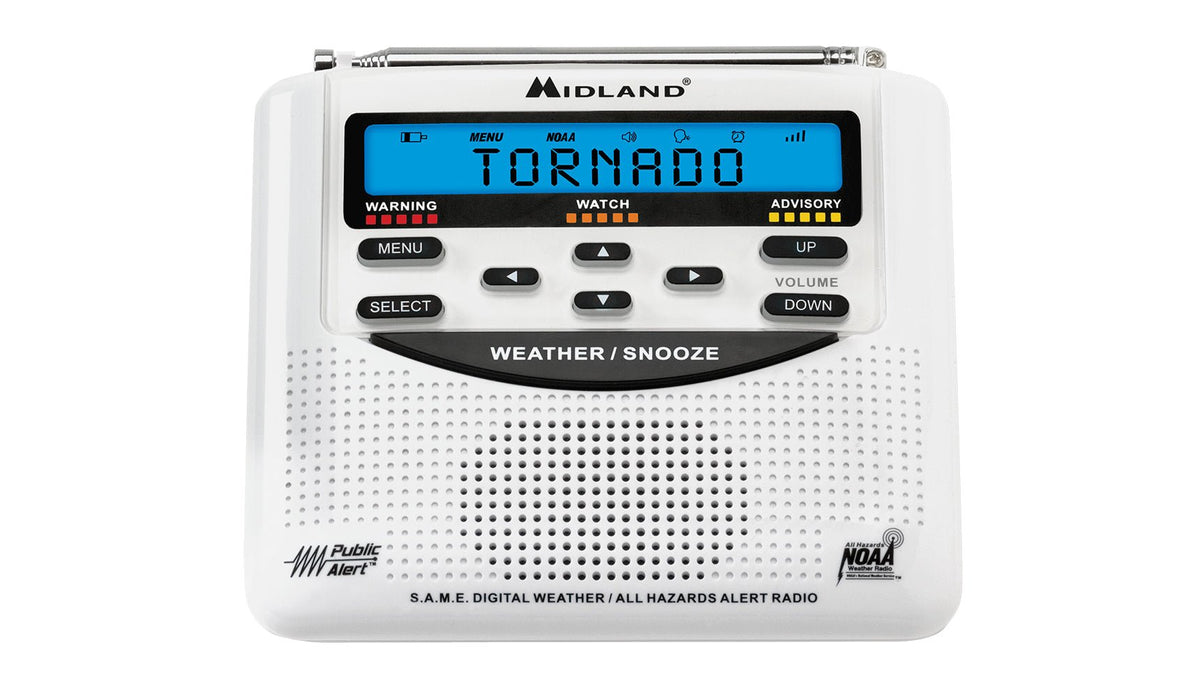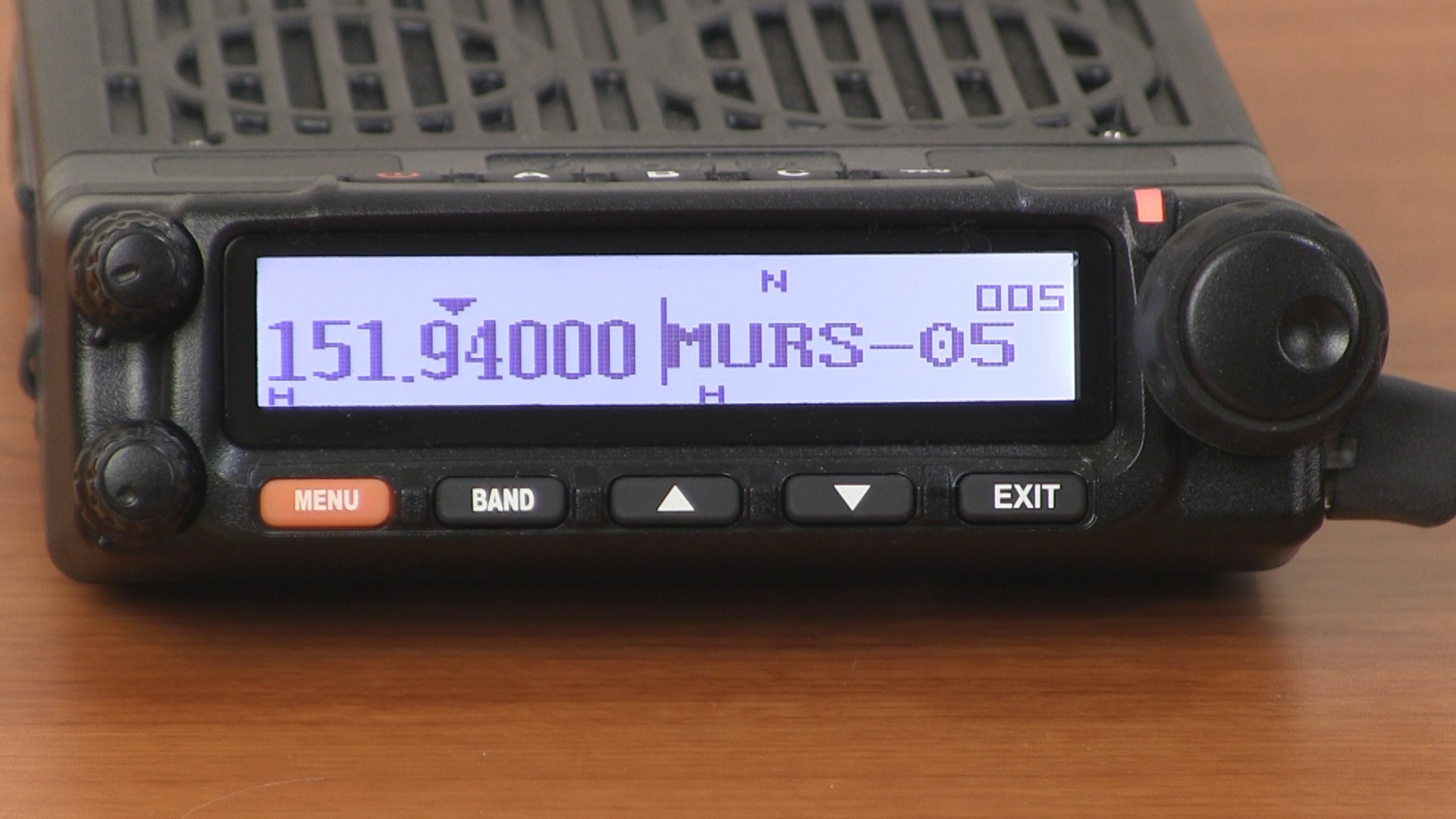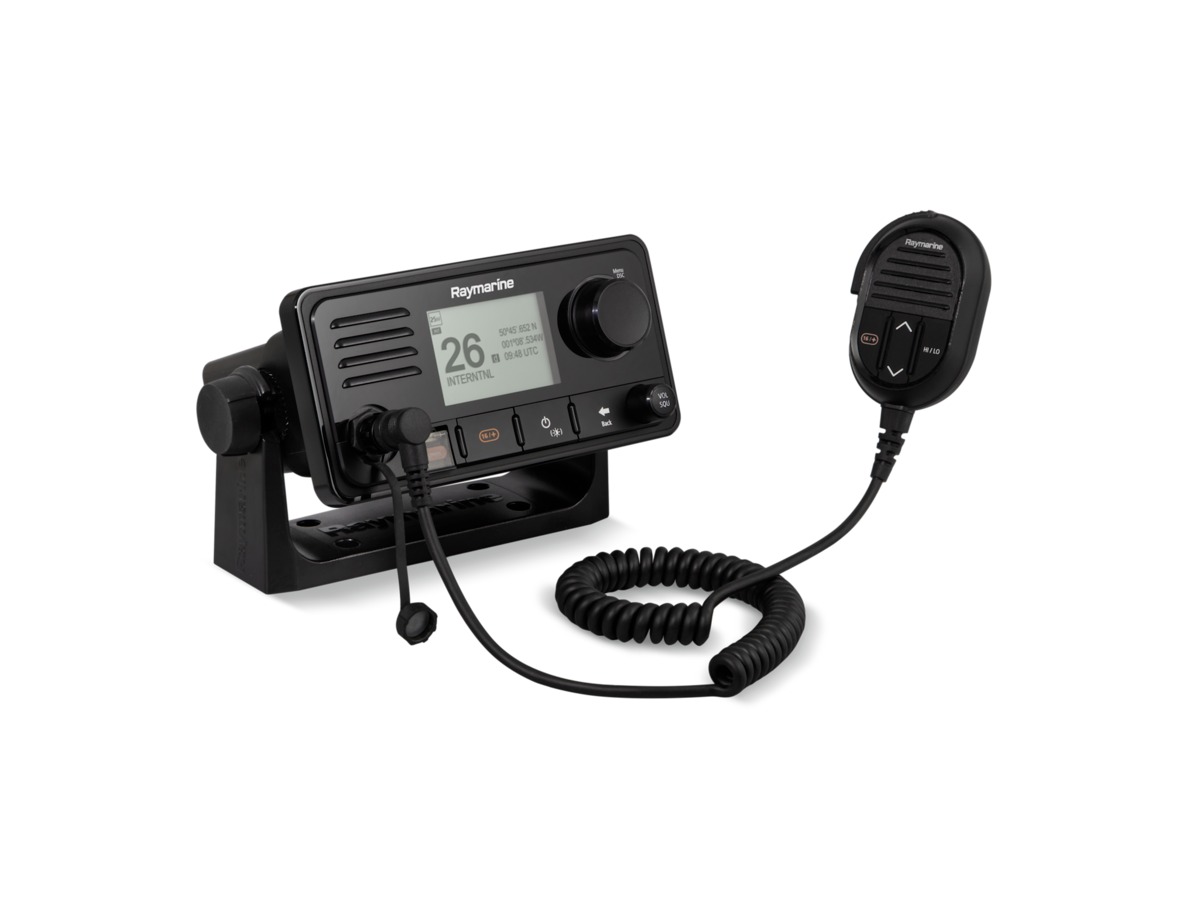Home>Devices & Equipment>Radio>What Is An SDR Radio
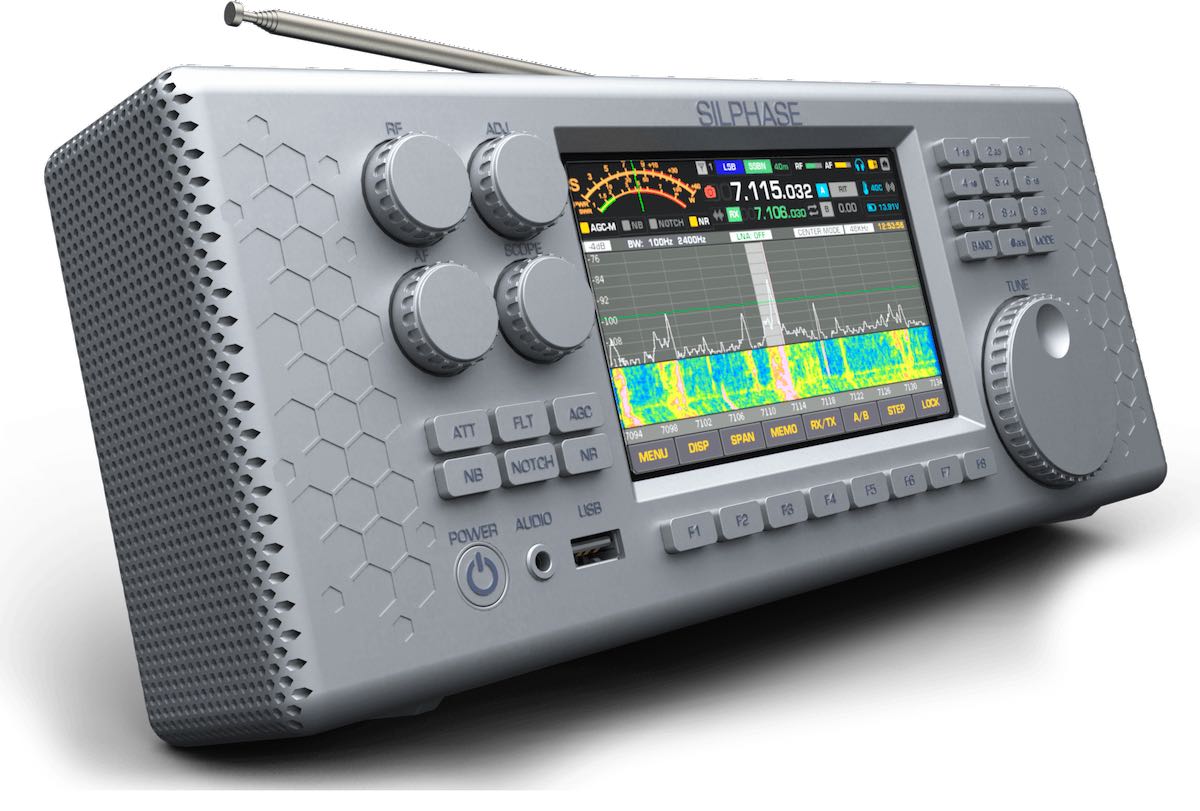

Radio
What Is An SDR Radio
Modified: January 22, 2024
Discover the world of SDR radios and learn what they are, how they work, and why they offer a versatile and flexible approach to radio communication. Explore the benefits of SDR technology today!
(Many of the links in this article redirect to a specific reviewed product. Your purchase of these products through affiliate links helps to generate commission for AudioLover.com, at no extra cost. Learn more)
Table of Contents
Introduction
Welcome to the fascinating world of SDR radio! SDR, short for Software Defined Radio, is a revolutionary technology that has transformed the way we listen to and interact with radio signals. Gone are the days of traditional analog radios with fixed frequency ranges. With SDR, radio signals can be received, processed, and decoded using software algorithms running on a computer or embedded device.
SDR offers a flexible and versatile approach to radio communication, allowing users to customize and adapt their radios to specific needs. Whether you are a radio enthusiast, a hobbyist, or a professional in the telecommunications field, SDR opens up a realm of possibilities.
In this article, we will explore the various aspects of SDR, including its definition, how it works, the benefits it offers, its applications in different industries, and the future it holds. By the end, you’ll have a comprehensive understanding of the incredible potential of SDR technology.
So, let’s dive in and unravel the mysteries of SDR radio!
Definition of SDR
Software Defined Radio (SDR) is a radio system in which traditional hardware components, such as mixers, filters, amplifiers, and modulators/demodulators, are replaced with software algorithms. This allows for greater flexibility and reconfigurability, as the functionality of the radio can be altered through software updates instead of hardware modifications.
At its core, SDR is built upon the concept of sampling and digitizing radio signals, which are then processed by software algorithms to extract, decode, and manipulate the information carried by the signals. The digitized signals can be stored, analyzed, and transmitted digitally, offering significant advantages over traditional analog radios.
In an SDR system, a hardware device known as a frontend or RF front-end is responsible for converting the radio frequency (RF) analog signals into digital samples that can be processed by the software. This frontend typically consists of an antenna, an analog-to-digital converter (ADC), and various analog and digital signal processing components.
SDR offers a wide range of operating frequencies, from very low frequency (VLF) to microwave frequencies, depending on the capabilities of the hardware frontend and software processing software employed. This flexibility allows for the reception and transmission of various types of signals, including AM, FM, digital audio broadcasting (DAB), digital video broadcasting (DVB), and even signals used for wireless communication such as Wi-Fi and Bluetooth.
The development and adoption of SDR technology have been accelerated by advancements in digital signal processing (DSP), computer hardware, and software algorithms. This has led to the proliferation of SDR devices that range from small USB dongles to full-fledged tabletop receivers and transceivers.
Overall, SDR represents a paradigm shift in radio communication, offering a dynamic, adaptable, and customizable approach that is revolutionizing the way we interact with radio signals.
How Does SDR Work?
To understand how SDR works, let’s break down the process into its basic components: signal acquisition, digitization, and signal processing.
First, the radio frequency (RF) signal is acquired using an antenna. The RF signal is then fed into the frontend of the SDR device, where it undergoes analog-to-digital conversion (ADC). The ADC samples the analog RF signal at a high rate, typically in the megahertz (MHz) range, and converts it into a digital representation. The digital samples are then processed by the software algorithms running on a computer or embedded device.
Once the RF signal is digitized, the software can manipulate and decode the information carried by the signal. This is done through a series of signal processing operations, including filtering, demodulation, decoding, and audio processing.
In terms of programming, SDR utilizes software-defined radios that are controlled by flexible and programmable radio platforms. These platforms allow users to define and modify different aspects of the radio signal processing chain, including the signal bandwidth, modulation scheme, demodulation algorithms, and filtering techniques. This level of control and flexibility enables users to adapt their radios for specific applications and scenarios.
Additionally, SDR devices often come with graphical user interfaces (GUIs) or software development kits (SDKs) that provide a user-friendly environment for configuring and controlling the SDR hardware and software. These interfaces allow users to tune into specific frequencies, adjust signal parameters, visualize signal spectrum, and apply signal processing algorithms.
It’s important to note that the software algorithms used in SDR are not limited to a single purpose or application. They can be updated and upgraded to support new features, standards, or protocols. This flexibility distinguishes SDR from traditional radios, which are limited by their fixed hardware architecture.
In summary, SDR works by acquiring an RF signal, digitizing it, and then processing it using software algorithms. This approach provides unparalleled flexibility, adaptability, and reconfigurability, making SDR a powerful tool in modern radio communication.
Benefits of SDR Technology
Software Defined Radio (SDR) technology offers a multitude of benefits that have revolutionized the field of radio communication. Here are some of the key advantages:
1. Flexibility and Reconfigurability: SDR provides the ability to modify and customize the functionality of the radio through software updates. This means that the same hardware can be used for different applications by simply changing the software-defined parameters. It allows for easy adaptation to new standards, protocols, and frequency bands, making it an ideal solution for dynamic and evolving communication needs.
2. Cost-Effectiveness: Traditional radios often require specialized hardware components for different applications, leading to higher costs. SDR eliminates the need for multiple specialized radios by using a single hardware platform that can be reprogrammed for various functions. This significantly reduces costs associated with equipment procurement, maintenance, and upgrades.
3. Improved Performance: SDR systems can take advantage of advanced signal processing techniques to improve reception quality, reduce noise, and enhance signal clarity. Software algorithms can implement sophisticated signal processing functions, such as adaptive filtering and interference cancellation, leading to better performance compared to traditional radios.
4. Interoperability: SDR technology enables seamless communication between different radio systems and networks, regardless of the underlying hardware or protocols. By employing software-defined radios, interoperability issues that arise from hardware incompatibilities can be overcome, enhancing communication flexibility and efficiency.
5. Wide Frequency Range: SDR devices can operate across a wide range of frequencies, from very low frequency (VLF) to microwave frequencies, depending on the capabilities of the hardware frontend. This versatility allows for the reception and transmission of various types of signals, making SDR suitable for applications in multiple industries.
6. Spectrum Efficiency: With SDR, the use of spectrum is more efficient due to dynamic spectrum management. Software-defined radios can detect and exploit unused or underutilized frequency bands, enabling more efficient utilization of the available spectrum.
7. Upgradability: As SDR is primarily driven by software, updates and upgrades can be easily implemented to incorporate new features, improve performance, or address security vulnerabilities. This ensures that SDR devices remain up-to-date with the latest advancements in technology and standards.
Overall, SDR technology offers numerous benefits, including flexibility, cost-effectiveness, improved performance, interoperability, wide frequency range, spectrum efficiency, and upgradability. These advantages have made SDR a game-changer in the field of radio communication, enabling innovative applications and paving the way for future advancements.
Applications of SDR
Software Defined Radio (SDR) technology has found extensive applications across various industries. Its flexibility, adaptability, and reconfigurability make it an ideal solution for a wide range of use cases. Here are some notable applications of SDR:
1. Wireless Communications: SDR plays a crucial role in wireless communication systems such as cellular networks, Wi-Fi, and Bluetooth. It enables efficient use of the radio spectrum and allows for easy integration of new standards and protocols. SDR is also used in software-defined base stations, allowing for dynamic allocation of resources and improved network capacity.
2. Radio Monitoring and Surveillance: SDR-based monitoring systems are used for signal intelligence (SIGINT), spectrum monitoring, and surveillance purposes. These systems can detect, analyze, and decode various types of signals, including voice, data, and video transmissions.
3. Amateur Radio: SDR has gained popularity among amateur radio enthusiasts due to its flexibility and wide frequency range. It allows for experimentation, advanced modulation schemes, and digital modes. SDR receivers and transceivers are commonly used in amateur radio applications.
4. Radio Astronomy: SDR technology is used in radio telescopes to capture and process radio signals from celestial sources. It enables astronomers to analyze and study cosmic phenomena, such as pulsars, quasars, and galaxies, by converting radio waves into digital data for analysis.
5. Aviation and Aerospace: SDR systems are deployed in aviation and aerospace applications for air traffic control, aircraft communications, and satellite communication. SDR’s ability to adapt to different frequency bands and protocols ensures efficient and reliable communication in these critical domains.
6. Public Safety and Emergency Services: SDR can be employed in public safety and emergency communication systems, providing interoperability between different agencies and networks. It allows for seamless communication during emergencies, enabling effective coordination and response strategies.
7. Military Communications: SDR technology is extensively used in military applications, providing enhanced communication capabilities, improved situational awareness, and secure, encrypted communication channels. SDR systems are employed in tactical radios, software-defined radios for soldiers, and battlefield communication networks.
8. Radio Broadcasting: SDR technology enables the digitization and transmission of radio broadcasts, allowing for improved audio quality, multiplexing of multiple programs, and the integration of additional data services. It offers broadcasters greater flexibility and efficiency in delivering content to their audiences.
9. Internet of Things (IoT): SDR can be utilized in IoT applications, particularly in wireless sensor networks and machine-to-machine communication. It enables the integration and interoperability of different devices and protocols, facilitating seamless connectivity and data exchange.
These are just a few examples of the diverse applications of SDR technology. Its versatility and adaptability make it a valuable tool in industries ranging from telecommunications to scientific research and public safety.
Advantages and Disadvantages of SDR
Software Defined Radio (SDR) technology offers numerous advantages that have transformed the field of radio communication. However, like any technology, it also comes with its own set of disadvantages. Here are the key advantages and disadvantages of SDR:
Advantages:
1. Flexibility and Reconfigurability: SDR allows for easy modification and customization of radio functionality through software updates. This flexibility enables rapid adaptation to new standards, protocols, and frequency bands.
2. Cost-effectiveness: SDR eliminates the need for multiple specialized radios by using a single hardware platform that can be reprogrammed for different applications. This reduces costs associated with equipment procurement, maintenance, and upgrades.
3. Improved Performance: SDR systems leverage advanced signal processing techniques to enhance reception quality, reduce noise, and improve overall performance compared to traditional radios.
4. Interoperability: SDR enables seamless communication between different radio systems and networks, ensuring compatibility and interoperability regardless of hardware or protocols.
5. Wide Frequency Range: SDR devices can operate across a broad range of frequencies, allowing for the reception and transmission of various types of signals, from AM/FM to Wi-Fi and Bluetooth.
6. Spectrum Efficiency: SDR’s dynamic spectrum management capabilities enable more efficient utilization of available spectrum, maximizing spectrum utilization and mitigating interference.
7. Upgradability: As SDR is primarily software-driven, updates and upgrades can be easily implemented to incorporate new features, standards, or security patches.
Disadvantages:
1. Power Consumption: SDR devices typically require more power compared to traditional radios due to the need for digital signal processing and high-speed ADCs.
2. Complexity: The implementation of SDR systems involves a combination of hardware and software components, which can increase the complexity of the overall system design and development.
3. Latency: SDR systems may introduce some latency due to the additional processing required for signal digitization and software algorithms. In real-time applications, this latency could impact performance.
4. Security Concerns: The software-driven nature of SDR introduces potential vulnerabilities, as hackers could exploit weaknesses in the software or firmware to disrupt or manipulate radio communications.
5. Dependence on Software: SDR relies heavily on software for signal processing and functionality, making it susceptible to software bugs and compatibility issues.
6. Initial Cost: While SDR technology can provide long-term cost savings, the initial investment for high-quality SDR hardware and software can be higher compared to traditional radios.
While the advantages of SDR technology outweigh the disadvantages, it is essential to consider these drawbacks when implementing SDR systems. With proper design, optimization, and security protocols, many of the disadvantages can be mitigated or minimized.
Future of SDR Technology
The future of Software Defined Radio (SDR) technology holds immense potential for advancements and innovations in various domains. Here are some key trends that indicate the direction in which SDR is heading:
1. 5G and Beyond: As 5G networks continue to roll out, SDR technology will play a vital role in enabling the next generation of wireless communication. SDR’s flexibility and adaptability will support the dynamic nature of 5G networks, enabling efficient resource allocation, network slicing, and seamless integration with other wireless technologies.
2. Internet of Things (IoT) Integration: SDR will continue to evolve to meet the growing demands of IoT applications. SDR devices that support multiple wireless protocols will enable seamless connectivity and interoperability among diverse IoT devices, facilitating the efficient exchange of data.
3. Cognitive Radio: Cognitive radio is an emerging field that uses intelligent algorithms to dynamically adapt radio parameters based on changing network conditions. SDR technology provides a solid foundation for cognitive radio systems, allowing for autonomous decision-making, improved spectrum utilization, and enhanced network efficiency.
4. Artificial Intelligence (AI) in SDR: The integration of AI techniques with SDR holds great potential. AI algorithms can optimize signal processing, improve modulation schemes, and enable more efficient spectrum sensing and decision-making in SDR systems.
5. Edge Computing: SDR devices at the network edge can offload processing tasks from centralized servers, reducing latency and improving overall system performance. Combining SDR with edge computing capabilities will enable real-time analysis and decision-making in resource-constrained environments.
6. Security and Privacy Enhancements: The future of SDR technology will emphasize robust security measures to protect against cyber threats. This includes secure protocols, authentication mechanisms, encryption algorithms, and vulnerability mitigation techniques to safeguard radio communications.
7. Miniaturization and Power Efficiency: SDR devices will become smaller, more portable, and energy-efficient, enabling applications in wearable devices, unmanned aerial vehicles (UAVs), and other compact devices.
8. Advancements in Signal Processing: Continued advancements in digital signal processing techniques will enhance the capabilities of SDR, enabling more sophisticated modulation schemes, interference cancellation, and adaptive filtering.
9. Collaborative and Dynamic Networks: SDR systems will play a pivotal role in collaborative networks where devices can dynamically form ad hoc networks and share spectrum resources. This will facilitate cooperative communication, distributed sensing, and efficient resource allocation.
10. Integration with Other Technologies: SDR will continue to integrate with emerging technologies such as blockchain, virtual reality (VR), and augmented reality (AR), resulting in new applications and synergies across different domains.
The future of SDR technology is exciting, with endless possibilities for innovation and advancements. As technology continues to evolve, SDR will remain at the forefront, driving new capabilities and enabling transformative solutions in the world of radio communication.
Conclusion
Software Defined Radio (SDR) technology has revolutionized the field of radio communication, offering flexibility, adaptability, and reconfigurability like never before. SDR’s ability to replace traditional hardware components with software algorithms has transformed the way we listen to, process, and transmit radio signals.
In this article, we explored the definition of SDR and how it works, delving into its benefits, applications, and future prospects. We discovered that SDR offers flexibility and reconfigurability, allowing for easy customization and adaptation to different standards and protocols. Its cost-effectiveness, improved performance, and interoperability make it an ideal solution in various industries, including wireless communications, public safety, aviation, amateur radio, and more.
Despite the advantages, we also acknowledged the challenges faced by SDR technology, including power consumption, complexity, and potential security vulnerabilities. However, with proper design, optimization, and security protocols, these disadvantages can be mitigated, and the benefits of SDR can be maximized.
Looking towards the future, we recognized the potential for SDR to continue advancing alongside technologies like 5G, IoT, cognitive radio, AI, and edge computing. The integration of these technologies will open up new opportunities and applications, enabling even more efficient and intelligent radio communication systems.
In conclusion, Software Defined Radio technology represents a paradigm shift in radio communication. Its flexibility, reconfigurability, and adaptability offer a world of possibilities for radio enthusiasts, professionals, and industries across the globe. By harnessing the power of SDR, we can continue pushing the boundaries of communication, innovation, and connectivity in the years to come.



